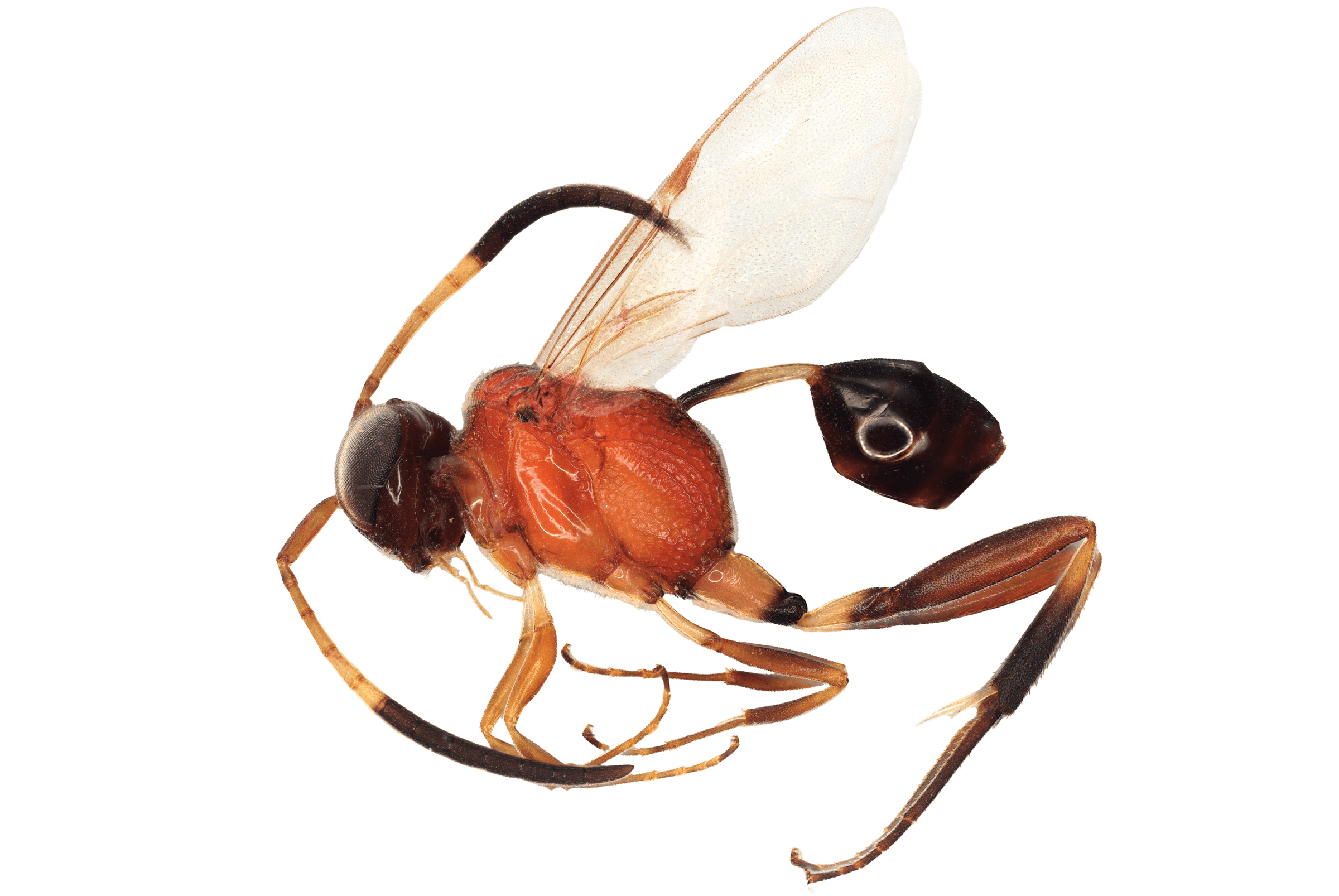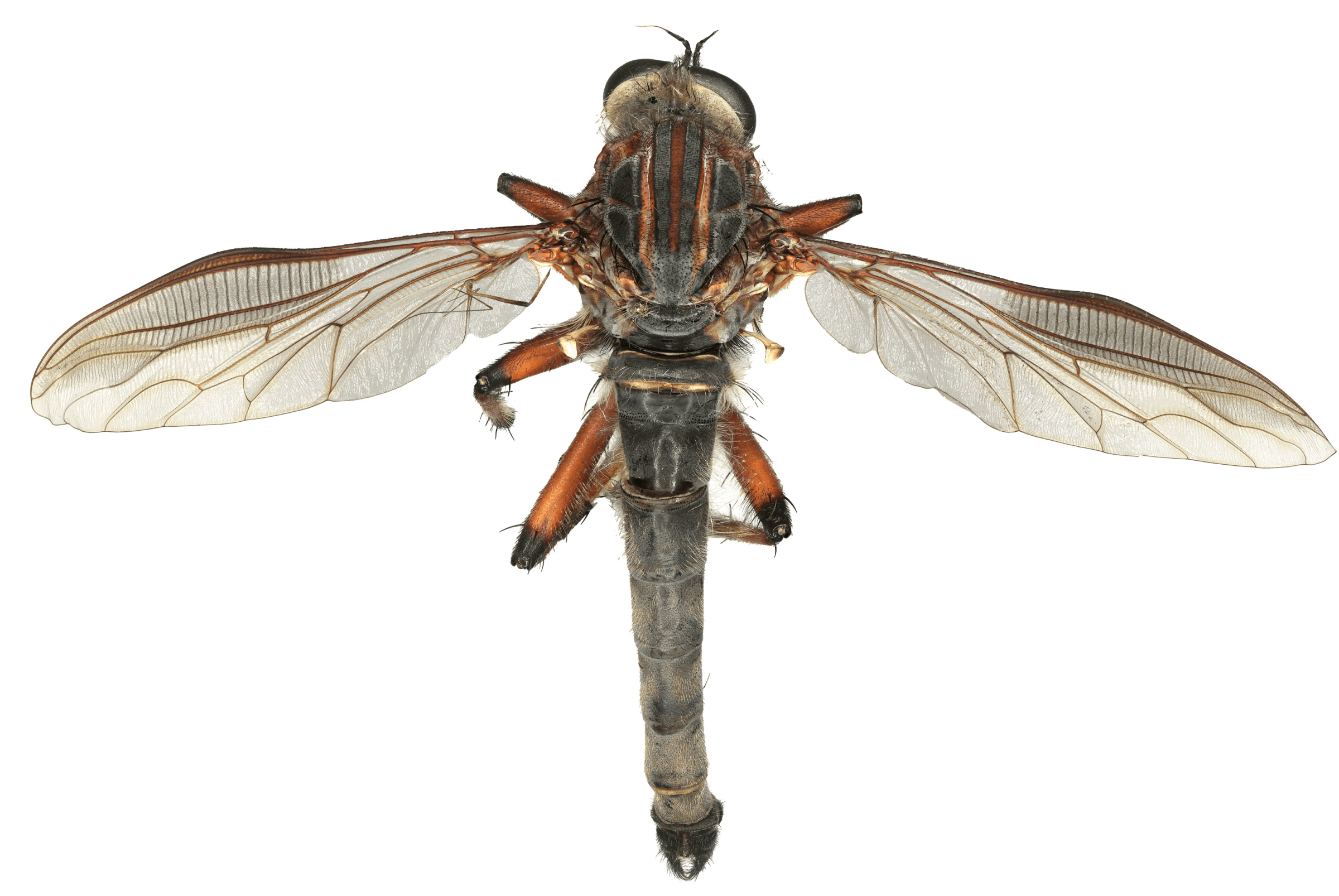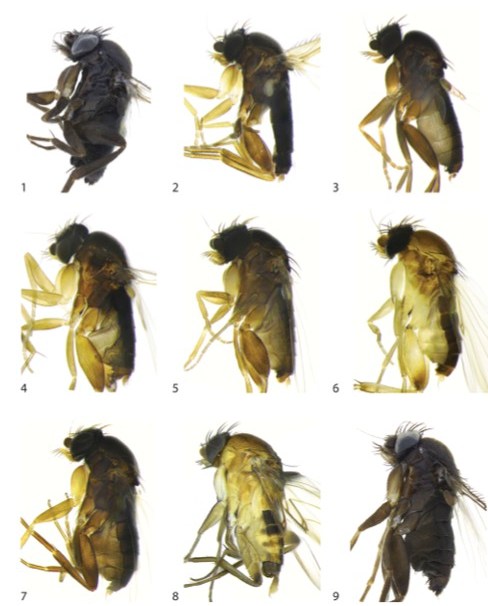- CDC Chops Foodborne Illness Surveillance Medscape
- The CDC quietly scaled back a surveillance program for foodborne illnesses NBC News
- CDC dramatically scales back program that tracks food poisoning infections Daily Bulletin
- The CDC Is Scaling Back a Major Food Safety Program—What It Means for You health.com
- CDC cuts back foodborne illness surveillance program CIDRAP
Blog
-
CDC Chops Foodborne Illness Surveillance – Medscape
-

Pakistan vs Afghanistan Live Streaming in India: When & where to watch 4th T20I on TV & online? PAK vs AFG predicted XIs
Having won the series opener against Afghanistan, Pakistan are aiming for a repeat when both teams meet for a second time in the ongoing T20I tri-series in Sharjah on Tuesday. With two wins from two matches, pakistan are on top of the points table with four points. Afghanistan, who had lost to Pakistan in their first game, came back to winning ways with a 38-run win over hosts United Arab Emirates (UAE) on Monday.
If Salman Ali Agha was the lone batter to shine for Pakistan in their first match, the likes of Hasan Nawaz and Saim Ayub rose to the occasion against UAE. Having said that, Pakistan needs the likes of Sahibzada Farhan and Fakhar Zaman to contribute with the bat too.
As far as the bowling is concerned, Haris Rauf dismantled Afghanistan with a four-wicket haul in the first game while Hasan Ali took three wickets in the second. Unlike in the first game, the Pakistan bowlers were guilty of conceding more that 150 runs against minnows UAE.
On the other hand, Afghanistan would like Rahmanullah Gurbaz to fire at the top. In both the games, Gurbaz could only manage 45 runs. Although the likes of Sediqullah Atal and Ibrahim Zadran scored fifties against UAE, Afghanistan will be looking for their top three to fire together at the top of the batting order.
Pakistan vs Afghanistan 4th T20I match details
Venue: Sharjah Cricket Stadium, Sharjah
Pakistan vs Afghanistan head-to-head in T20Is
Pakistan have played Afghanistan in eight T20Is with the Men in Green emerging victorious five times. Three games were won by Afghanistan. The last time Pakistan beat Afghanistan was last month during the ongoing tri-series when they won by 39 runs.
Pakistan vs Afghanistan 4th T20I probable XIs
Pakistan: Sahibzada Farhan, Saim Ayub, Fakhar Zaman, Salman Agha (c), Hasan Nawaz, Mohammad Nawaz, Mohammad Haris (wk), Faheem Ashraf, Hasan Ali, Salman Mirza, Sufiyan Muqeem
Afghanistan: Rahmanullah Gurbaz (wk), Ibrahim Zadran, Sediqullah Atal, Darwish Rasooli, Karim Janat, Azmatullah Omarzai, Rashid Khan (c), Mohammad Nabi, Sharafuddin Ashraf, Mujeeb Ur Rahman, Fazalhaq Farooqi
How to watch PAK vs AFG 4th T20I in India?
There is no official broadcaster for the T20I tri-series involving Pakistan, Afghanistan and UAE. Indian fans can still watch live streaming of Pakistan vs Afghanistan 4th T20I on FanCode app and website from 8:30 PM IST.
Continue Reading
-

14 of the best films to watch this September
Twinless
This ingenious and outrageous comedy drama was showered with rave reviews when it premiered at the Sundance Film Festival in January. But all of those reviews were careful not to give too much away, because the twists in Twinless are what make it so remarkable. The premise is that Roman (Dylan O’Brien) has an identical twin who dies in a car crash. Roman goes to a twin bereavement support group, where he meets Dennis (the film’s writer-director, James Sweeney), and the two become close friends. But “the initial premise is merely a small fraction of what this film has in store as it upends expectations and runs with them as far as it can”, said Chase Hutchinson in The Wrap. “It’s a juggling act of tones that manages to be funny, chaotic, dark and even unexpectedly poignant… what fun Sweeney has contorting his characters into a whole host of hilarious, yet still uncomfortable, situations.”
Released on 5 September in the US and Canada
 Universal Studios
Universal StudiosHim
There’s no sign yet of the next horror film directed by Jordan Peele (Get Out, Us, Nope), but in the meantime we have Him, which Peele produced, and which seems to have his signature blend of shocks, mystery and sly social commentary. It’s the twisted story of a rising American football star, Cameron Cade (Tyriq Withers), who needs some extra help to fulfil his potential. His hero is Isaiah White (Marlon Wayans), a legendary quarterback, so Cade is thrilled to be invited to White’s isolated training compound. Once he’s there, though, he discovers that the training involves gory violence and hallucinatory weirdness. But if that’s what it takes to be a sporting superstar, could the ordeal be worth it? Written by Zack Akers and Skip Bronkie, Him is a “mash-up where sports meet horror”, says its director, Justin Tipping. “I guarantee, this film does not play it safe.”
Released on 19 September in the US and Canada and 25 September in Australia
 Vincent Productions
Vincent ProductionsRiefenstahl
Leni Riefenstahl’s documentaries Triumph of the Will and Olympia are Nazi propaganda, though Riefenstahl argued that she cared only about art and beauty, not politics. She spent plenty of time with Hitler, and her claims that she was unaware of his crimes against humanity were never wholly convincing. Andres Veiel’s documentary goes further: it argues that Riefenstahl was a Nazi throughout her life, however much she protested otherwise. The film is an “extraordinary deep-dive documentary about the original cancelled artist”, said The Guardian. “Veiel gained unprecedented access to Riefenstahl’s personal archive and combed through film footage, audio, photos and writing… He paints a textured, complex portrait that feels close to definitive; a slice of dark history that speaks (eloquently, implicitly) to present-day tensions.”
Released on 5 September in the US
—
If you liked this story, sign up for The Essential List newsletter – a handpicked selection of features, videos and can’t-miss news, delivered to your inbox twice a week.
For more Culture stories from the BBC, follow us on Facebook and Instagram.
Continue Reading
-

We still haven’t documented 90 percent of animals on Earth
It’s easy to assume, as many people do, that our planet is well explored. In the last few centuries, humans have summited Earth’s highest peaks, dived its deepest ocean trenches, and trekked to the North and South poles, documenting the diversity of life along the way — the many birds, butterflies, fish, and other creatures with which we share our big planet.
Life on Earth is now largely known.
The more that scientists study the planet’s biodiversity, the more they realize how little of it we know. They estimate that for every species we’ve discovered, there are likely at least another nine or so that remain undiscovered or unidentified, meaning around 90 percent of life on Earth is unknown.
This doesn’t include the big stuff — the black bears and belugas and bald eagles, all of which have scientific names and descriptions published in academic journals. The unknown is made up of small organisms, such as insects, mites, and crustaceans. These species are the nuts and bolts of ecosystems: They produce soil, pollinate crops, and feed almost everything. And most of them have yet to be identified.
In just one fly family known as Cecidomyiidae, for example, scientists estimate there could be as many as 1.8 million species globally, and yet fewer than 7,000 have been described. This is especially remarkable given that the total number of described species across the entire animal kingdom is somewhere around 2 million.
Biologists describe animals like this as dark taxa, a term that refers to groups of organisms in which the bulk of species are undescribed or undiscovered. Some taxonomists have also called them biology’s dark matter.
“Most people think that life on Earth is described, and we have a good idea of how ecosystems are functioning,” said Emily Hartop, a fly researcher and taxonomist at the Norwegian University of Science and Technology, who studies dark taxa. “The reality is that for most species on Earth, we don’t know what they are, we don’t know where they are, we don’t know what they’re doing. They are unknown.”
Center for Biodiversity Genomics, University of Guelph

Center for Biodiversity Genomics, University of Guelph

Center for Biodiversity Genomics, University of Guelph

Center for Biodiversity Genomics, University of Guelph
Scientists who study dark taxa argue that lifting the shadow on these organisms is essential to our own survival. If we don’t know what constitutes our ecosystems, we risk killing off the key players that make them function — or failing to detect a potential threat, such as a disease-carrying insect that could set off the next global pandemic.
“The little things run the planet,” said Rudolf Meier, a researcher at Berlin’s Museum of Natural History and Humboldt University of Berlin who also studies dark taxa.
Hartop and some other researchers have dedicated their careers to exposing dark taxa — to making Earth’s unknown known. But filling these gaps is an enormous task and, until recently, considered impossible. The challenge comes down to process: How do you identify millions upon millions of species that are tiny, often look the same, and lack the traditional sort of charisma that funds expeditions?
Dark taxa biologists find hundreds of new species wherever they look
A little over a decade ago, when Hartop was living in Los Angeles, she and her colleagues set up bug traps in backyards across the city. They were mesh tents with openings, known as Malaise traps. Once flies buzz into them, they get stuck and navigate — rather unfortunately for them — into a vial of ethanol. The ethanol both kills and preserves the animals.

Over the course of just one year, the traps collected 99 species of scuttle flies, small insects in the family Phoridae that look, to my untrained eyes, a lot like fruit flies. Forty-three of those species were new to science and had never been described before.
When scientists look for dark taxa, they seem to find new species everywhere. Meier and his colleagues recently collected fungus gnats in Singapore, and their traps revealed 120 species. All but four or five were unknown to science. When researchers went looking for wasps in Costa Rica that parasitize other insects, they found 416 species. More than 400 of them hadn’t been described yet.
And the opportunity for discovery extends beyond the animal world. Scientists recently analyzed genetic codes from thousands of specimens of ectomycorrhizal fungi — a type of fungi that form symbiotic relationships with plant roots — and found that only around 20 percent of those codes matched known species.
Why have these organisms been overlooked for so long? One reason is that they’re typically small, often measuring less than 5 millimeters, Meier said. That makes them harder to notice — and less exciting by traditional standards.
“Funders are much more likely to give you money for birds and butterflies, because that’s something that a funder, who is not a biologist, finds much more relatable,” Meier told me. “If I want to get money for doing things on dark taxa, I first have to override these biases.”
But a far bigger obstacle is that these groups of life are extremely diverse. There are three species of elephants and eight species of bear. Meanwhile, there could be 1 million species of scuttle flies globally, Hartop said.
That creates a problem of scale. While trapping bugs in tents is easy, it’s much harder to identify them and demonstrate that they’re different from other species that have already been described. Until recently, it was nearly impossible.
We are in the Golden Age of discovery
For hundreds of years, scientists have largely categorized animals by their appearance. A toucan is obviously different from a robin, which is obviously different from a hummingbird. Scientists use these distinctions in form to separate animals by species, typically defined as organisms that reproduce with each other but not with other animal groups.
The study of form, known as morphology, has been used to categorize small things, too, such as moths and butterflies. But for some animal groups — scuttle flies, mites, and nematodes, for example — this approach is inadequate. While distinguishing these animals by appearance is often possible, it typically requires an enormous amount of time and expertise; scientists literally have to look at them one by one through a microscope. Plus, looks can be deceiving: A bunch of, say, black-and-blue butterflies might appear identical but come from different genetic lineages that make them distinct species.

That’s why a technology called DNA sequencing has been such a game-changer. In the 1970s, scientists figured out how to sequence part of an organism’s DNA, producing a string of letters that corresponds to its genes. They later discovered that they could use just a small snippet of that sequence to tell one species apart from another. In 2003, a Canadian biologist named Paul Hebert dubbed those snippets “barcodes” because they serve as unique species IDs, akin to barcodes on cereal boxes in the grocery store.
Over time, scientists sequenced animals and uploaded their barcodes to databases, helping organize and reorganize the animal kingdom. All the while, the technology evolved. DNA sequencing is now so advanced that taxonomists — those who classify life — can barcode thousands of specimens at one time.
It’s this approach that’s helping illuminate dark taxa: Researchers can collect scores of specimens from the field, sequence portions of their DNA, and then upload those bits of code to an existing database to see if they match known species. If not, they might represent something new.
Even with modern DNA sequencing, identifying unknown life is, to be clear, still very hard. A big issue is that there aren’t barcodes for most species that scientists have already described. Museums might have physical specimens — dead moths or beetles in a drawer in their basement — that lack genetic data in online databases. So just sequencing a discovery is usually not enough to prove that something is new to science.
When scientists are confident that they’ve found something new, they’ll face additional challenges if they want to formally describe the animal and give it a scientific name. That typically requires multiple lines of evidence and a description published in a scientific journal. Doing that for dark taxa — which, again, have hundreds of thousands of unknown species — would be incredibly time-consuming. (The world of taxonomy is full of drama about the species-naming process and how much evidence scientists should be required to provide. There’s also a debate about whether formally naming species actually matters if they already have unique DNA sequences that identify them.)
Nonetheless, modern DNA sequencing has massively sped up the process for discovering and identifying life. It’s pretty extraordinary: Even though we’ve known about the most visible species around us for hundreds of years, only now are we in the Golden Age of species discovery.
“It’s unbelievable,” said Hebert, a professor at the University of Guelph in Ontario who oversees the Center for Biodiversity Genomics, a DNA-barcoding research center. “This is the age of bio-discovery.”
Can we describe all life on Earth?
That’s the goal. While there are no reliable estimates for the total number of species on Earth, it’s likely in the tens of millions. And again, only around 2 million are formally described, Hebert said.
Before modern sequencing became a reality, identifying all life on Earth would have taken hundreds, if not thousands, of years and likely would have cost trillions of dollars. Now, some scientists are confident that they can do it in a matter of decades or even years.
In 2005, Hebert launched a project with his colleague Sujeevan Ratnasingham that is essentially trying to collect DNA data for every animal on Earth. So far, the project — known as Barcode of Life — has sequences for roughly 1.5 million species, Hebert said, though many of those are not formally described. To barcode the rest would require no more than $1 billion, he told me confidently. That money would help fund expeditions and DNA sequencing around the world.
“We want barcode records for every species,” Hebert said. “If I can persuade the world to support this with about $1 billion, which is trivial, we can complete the inventory of animal life by 2040 — I am certain.”
Hebert and other taxonomists imagine a world in which all species are known and can thus be tracked. Just as we monitor the weather for looming disasters, complete inventories of animal life could allow scientists to monitor biodiversity — both the obvious and obscure stuff — to see how our ecosystems are changing and what that means for us. Are ocean food chains we rely on shrinking? Are the insect larvae that make our soils fertile in decline? Is a pathogen on the loose?
But there’s also a more noble reason to discover life, he says. “This is the planet we live on,” Hebert said. “We really should understand the organisms that we share it with.”
And if you’ve got a billion dollars lying around, you can apparently help.
“For a billionaire, it’s a no-brainer,” Hebert said. “That’s a legacy for that person. You only get to do it once: discover life on our planet.”
Continue Reading
-

Pak Army chief Asim Munir meets China President Xi Jinping day after Modi’s SCO visit concludes | Latest News India
Pakistan Army chief Field Marshal Asim Munir formally met Chinese President Xi Jinping, as part of Prime Minister Shehbaz Sharif’s delegation, on Tuesday.
Pakistan Army chief Field Marshal Asim Munir. (Reuters file) The meeting comes a day after a summit of the Shanghai Cooperation Organisation (SCO), at which India’s PM Narendra Modi was among the attendees, concluded with a joint declaration condemning the Pahalgam attack in particular, and terrorism in general.
Pakistan was not expressly mentioned but PM Modi spoke of “some nations” using terror as policy. And the declaration was a big step forward from India’s perspective for Pahalgam to be mentioned directly, as the Modi government has blamed Pakistan for the attack in April. Indian forces carried out retaliatory strikes on terror bases as part of Operation Sindoor in May.
Munir, who is considered the most powerful man in Pakistan, was promoted from General to Field Marshal soon after the operation as he claimed a successfully pushback.
He was part of the Pakistan team that participated in the SCO summit in Tianjin and will attend a grand parade of the Chinese army to on Wednesday to mark the 80th anniversary of the Chinese win against the Japanese in World War 2.
This is his second visit to China as army boss. In his first visit to China in July after taking over as Field Marshal, Munir met Vice President Han Zheng but not President Xi, unlike his predecessor General Qamar Javed Bajwa.
Before that, Munir was hosted for lunch by US President Donald Trump, a rare gesture by an American leader which raised eyebrows in India as well as in China, considering Pak-China all-weather ties.
While Xi met Prime Minister Narendra Modi and a host of other leaders, who attended the SCO summit in Tianjin, Sharif was allocated the slot on Tuesday to meet the Chinese President in Beijing. Munir was expected to join Sharif to watch the parade in which the Chinese military plans to display its most modern weapons.
The weapons systems were of big interest to the Pakistan military as over 80 per cent of its weapons acquisitions are from China — a fact flagged by India after Op Sindoor.
But there has been a realigment of relations by India with China, which were frosty for the past five years after the Galwan border clash, after Trump levied massive trade tariffs on India.
Munir-Sharif and Xi held wide-ranging talks on bilateral & regional cooperation, said Pakistan’s deputy PM and foreign minister Ishaq Dar, who was also part of the team. Xi said the two sides should accelerate building an even closer China-Pakistan community and set up a model for the broader neighbourhood, according to Dar.
China’s state-run Xinhua news agency quoted President Xi Jinping as saying that China stands ready to work with Pakistan to build upgraded versions of the China-Pakistan Economic Corridor and the China-Pakistan Free Trade Agreement. China hopes Pakistan will take effective measures to ensure the safety of Chinese personnel, projects and institutions in Pakistan, Xi further said, as per a PTI report.
On his part, Sharif hailed the Global Governance Initiative (GGI), proposed by Xi at the SCO summit to improve global governance, saying it is of great significance for world peace, development and stability, and Pakistan will give it full support and work actively to implement it, added the report.
Continue Reading
-

Effect of epidural catheter design on analgesic efficacy during progra
Introduction
Since programmed intermittent epidural bolus (PIEB) was introduced to maintain labor analgesia in 2006,1 it has been shown to provide a preferable analgesic effect with reduced consumption of local anesthetics, less motor block, fewer patient-controlled epidural analgesia (PCEA) boluses, and a lower incidence of instrumental vaginal deliveries. Additionally, PIEB improves maternal satisfaction compared to continuous epidural infusion (CEI) methods.2,3 Although many studies have explored variations in PIEB regimens (drug concentration, bolus dose, interval, bolus delivery rate) to optimize labor analgesia,4–6 less attention has been given to the specific design features of epidural catheters associated with this technique.7
The effectiveness of epidural analgesia depends on several factors, including catheter design. Historically, the number of orifices in an epidural catheter has been linked to analgesic outcomes. Multi-orifice catheters have been reported to provide better analgesic efficacy than single-orifice catheters, given that the presence of multiple orifices can enhance drug distribution within the epidural space.8–11 However, these studies were conducted using conventional continuous infusion or manual bolus techniques. Our in vitro study12 revealed significant differences in flow and drug distribution between single- and multi-orifice catheters under varying rates of programmed intermittent bolus administration. Theoretically, anesthetic distribution within the epidural space is essential for adequate labor analgesia, especially when coverage of the lumbar epidural space (low thoracic and sacral dermatome coverage) is required. In a subsequent clinical trial,13 we found that single-orifice catheters outperformed multi-orifice catheters in terms of faster analgesic onset, lower local anesthetic consumption, and reduced PCEA use at a PIEB delivery rate of 480 mL/h. However, whether this effect persists at a commonly used rate of 360 mL/h remains unclear.
This prospective, randomized, double-blind, controlled trial aimed to compare the analgesic outcomes of single-orifice and multi-orifice catheters at a 360-mL/h delivery rate during PIEB. We hypothesized that single-orifice catheters would improve labor analgesia and reduce ropivacaine consumption.
Materials and Methods
Study Population
This prospective, randomized, double-blind study was approved by the Institutional Ethics Committee of Shanghai First Maternity and Infant Hospital (Ethics No: KS23161; March 20, 2023). This trial adhered to the Consolidated Standards of Reporting Trials (CONSORT) guidelines and was registered with the Chinese Clinical Trial Registry (No: ChiCTR2300072694; principal investigator: Weijia Du; date of registration: June 21, 2023; Chairperson of the ethics committee: Ye Lou) before patient enrolment.
The inclusion criteria were as follows: healthy, term, nulliparous women, aged 20 to 40 years, with an American Society of Anesthesiologists physical status II; singleton pregnancies with vertex presentation; active labor with progressive cervical dilation; requesting epidural analgesia with cervical dilation between 2 and 5 cm; and a numerical rating scale (NRS) pain score >5 (NRS: 0 = no pain and 10 = worst pain imaginable). Exclusion criteria included a body mass index >40 kg/m, history of drug abuse, use of pharmacological analgesics within 4 h before the epidural request, contraindications to epidural anesthesia, conditions increasing the risk of caesarean delivery (ie, placenta previa, history of uterine anomalies or surgery), and fetal abnormalities. Eligible participants were given verbal and written information, and all provided written informed consent. Participants were excluded from further studies if delivery occurred within 1 h of epidural catheterization.
Randomization and Concealment of Group Assignments
Participants were randomly assigned in a 1:1 ratio using fixed blocks of four, without stratification factors, generated by one of the investigators using SAS 9.4 (SAS Institute, Cary, NC). They were allocated to receive either a single-orifice epidural catheter (Group A) or a multi-orifice catheter (Group B). To ensure allocation concealment, staff not involved in the study placed group assignments in opaque, sealed envelopes. The anesthesiologist responsible for catheter placement based on group assignment was not included in the study. All other study personnel, including the nurse conducting cervical examinations and pain assessment at the request for labor analgesia, the research nurse performing the follow-ups, and the participants, were blinded to group allocation.
Epidural kits labelled for Group A contained a 19-G, single-orifice, open-end, wire-reinforced, polyurethane, and flexible catheter, whereas kits for Group B contained a 19-G, four-lateral-hole, wire-reinforced, polyurethane, and flexible catheter (Arrow International, Westmeath, Ireland). All components of the epidural kits were identical except for the epidural catheter. The two types of catheters were manufactured by the same company, with different hole layouts being the only difference.
Treatment Protocol
Epidural Catheter Placement
Standard maternal and fetal monitoring was performed, including baseline maternal heart rate and non-invasive arterial blood pressure (BP) measurements. An intravenous catheter was inserted, and 500 mL of lactated Ringer’s solution was infused over 15 min during the epidural procedure. The attending anesthesiologist placed all catheters. Analgesia was initiated with the parturient in the right lateral decubitus position, targeting the L2–L3 interspace using pre-procedural spinal ultrasound assessment. After identifying the epidural space via the loss-of-resistance technique, a single- or multi-orifice epidural catheter was advanced 4 cm into the epidural space, with the needle bevel-oriented cephalad, and secured. The parturients were then placed in a supine position with left uterine displacement. After confirming negative aspiration for blood and cerebrospinal fluid, a 3-mL test dose of 1.5% lidocaine with 15 μg of epinephrine was administered. Parturients with a positive test dose were withdrawn from the analysis. These cases were managed according to standard clinical practice: the epidural catheter was either repositioned or replaced, and alternative analgesia was provided as needed. Complications such as intravascular or intrathecal placement, paresthesia, or difficulty threading the catheter were recorded.
Initiation of Labor Analgesia
Epidural analgesia was initiated with a loading bolus of 12 mL of 0.1% ropivacaine mixed with sufentanil (0.3 µg/mL). This was administered 3 min after administering the test dose, delivered in 6-mL increments every 2 min. Adequate analgesia was defined as an NRS score ≤ 2 during two consecutive uterine contractions with no request for additional analgesia, confirmed by tocodynamometer tracings.
Maintenance of Labor Analgesia
After adequate analgesia was established, an epidural pump (Apon ZZB-IV; Jiangsu Apon Medical Technology, Jiangsu, China) was initiated to deliver PIEBs of 10 mL every 45 min, the first bolus was administered 45 min after the loading bolus. Additionally, all parturients had access to PCEA, which allowed 8-mL boluses with a 10-min lockout interval between PCEA or PIEB/PCEA boluses. The solution used for PIEB and PCEA was 0.1% ropivacaine with sufentanil (0.3 µg/mL). The injectate rate was set at 360 mL/h, with a 40-mL hourly maximum volume.
Pain scores were recorded using NRS, and sensory blockade (assessed via cold stimulation) and motor strength were assessed every 2 min during the first 20 min, and subsequently at 30 min, 60 min, and then at 60-min intervals until delivery. Motor strength was measured using the modified Bromage score: 0= No impairment; 1= Inability to raise the extended leg but preserved knee and foot movement; 2= Inability to raise the extended leg or flex the knees, with retained foot movement; 3= Complete block (no movement at ankles, feet, or knees). Motor blockade was defined as a modified Bromage score ≥1. The sensory blockade level to cold was assessed bilaterally along the mid-clavicular line, from the caudal to the cephalad. The upper sensory block level was recorded as the highest dermatome, where the parturient no longer felt normal sensations compared to the forehead or cheek. Dermatomal levels in the lower extremities were tested at the inguinal crease at the midclavicular line (L1), anteromedial thigh (L2), medial femoral condyle above the knee (L3), medial malleolus (L4), dorsum web between the great and second toes (L5), lateral calcaneus (S1), and midpoint of the popliteal fossa (S2). The study continued for 6 h post-initial dose or until full cervical dilation, whichever occurred first.
Standard care at the institution included non-invasive BP monitoring every 2 min during the first 20 min, then at 30- and 60-min intervals until delivery, along with continuous maternal heart rate, pulse oximetry, and fetal heart rate monitoring. Maternal hypotension episodes (systolic BP <90 mmHg or <80% of baseline) and fetal bradycardia (<110 bpm for >10 min) were recorded and treated properly. The parturient was excluded from the analysis if delivery occurred within 1 h of epidural catheterization. Data on analgesic usage were extracted from the investigator’s history of pump use after delivery.
Inadequate Analgesia
In the event of an NRS score >3 or a maternal request for additional medication 20 min after the loading bolus, the parturient was instructed to self-administer the PCEA bolus. If the pain persisted after two PCEA boluses within 20 min, a provider bolus of 5 mL of 0.2% ropivacaine was administered manually. If necessary, an additional 5 mL was administered after a 10-min interval. If adequate analgesia was still not achieved, the epidural catheter was replaced, and the parturient was withdrawn from the analysis.
Outcomes
The primary outcome was ropivacaine consumption per hour, calculated as the total amount of ropivacaine administered (via pump and provider-administered boluses) divided by the duration of labor analgesia (mg/h). The duration of labor analgesia was defined as the time from pump initiation to delivery. Secondary outcomes included the percentage of parturients with adequate analgesia 20 min after the initial epidural bolus, time to achieve adequate analgesia, PCEA boluses requested and delivered, time to first PCEA bolus request, and the number of clinician-administered boluses. Other analgesic characteristics such as the frequency of motor block and unilateral blockade were also collected.
Additional data collected included demographic information, obstetric variables, maternal satisfaction (assessed 24 h after delivery using a 5-point rating scale: 5 = excellent, 4 = very good, 3 = good, 2 = fair, 1 = poor), and the incidence of side effects such as pruritus, vomiting, postpartum headache, hypotension, and fetal bradycardia.
Statistical Analysis
The primary outcome was ropivacaine consumption per hour. Data from a previous study13 involving 182 parturients indicated that the mean (standard deviation) ropivacaine used per hour was 14.45 mg (1.87 mg) with a single-orifice catheter and 15.49 mg (2.10 mg) with a multi-orifice catheter. A sample size of 59 participants per group provided 80% power to detect this difference at α = 0.05 using a two-sided t-test. To account for 5% dropouts and catheter failures, we aimed to enroll 124 participants. Sample size calculations were performed using PASS software (NCSS, Kaysville, UT).
Data from this randomized controlled trial were analyzed on an intention-to-treat basis using SPSS (version 24.0; IBM, Armonk, NY). The normality of continuous data was tested using the Shapiro–Wilk test. Normally distributed data are presented as mean ± standard deviation and analyzed among groups using the t-test. Skewed data are presented as median [interquartile range] and compared using the Mann–Whitney U-test. Categorical variables are reported as frequencies (percentages) and were compared using the chi-squared (χ2) test. Standardized differences and 95% confidence intervals (CIs) were calculated for interval data using Hedge’s g and for ordinal and dichotomous data using Cliff’s delta, calculated via the “effsize” function in R software (version 4.1.2; R Foundation for Statistical Computing, Vienna, Austria) through R Studio (version 2023.06.1+524; RStudio, Boston, MA).
To assess the within-subject variability in VAS scores between groups, a mixed-effects model with repeated measures was used, incorporating group, time, and their interaction as fixed effects, with a random intercept and group-specific residual variances. This was compared to a restricted model with equal residual variances. Maximum likelihood estimation was used to determine covariance parameters. The least squares mean for VAS scores was also estimated using mixed effects with repeated measures. Statistical analyses for the mixed-effects model were conducted using SAS (version 9.4; SAS Institute). P<0.05 was considered statistically significant.
Results
This study was conducted at Shanghai First Maternity and Infant Hospital between July 2023 and September 2023. The participant flow is outlined in Figure 1. A total of 102 participants were included in the final analysis (50 in the single-orifice catheter group and 52 in the multi-orifice catheter group). Maternal demographics and baseline characteristics were well-balanced between the two groups (Table 1).
Table 1 Baseline Characteristics

Figure 1 Flow chart showing study participant recruitment.
The primary and secondary outcomes are summarized in Table 2. The median (interquartile range) ropivacaine consumption per hour showed no significant difference between the groups: 12.6 mg/h [11.6–13.2 mg/h] for the single-orifice catheter group and 12.8 mg/h [12.3–13.3 mg/h] for the multi-orifice catheter group (difference 29%; 95% CI, –10.2 to 68.2%; P=0.241, Figure 2). There were also no significant differences in the median time to the first PCEA bolus, the percentage of parturients who required PCEA, or the number of PCEA boluses administered between the two groups. However, a higher percentage of parturients achieved adequate analgesia 20 min after the loading bolus with the single-orifice catheter compared to the multi-orifice catheter (84.0% vs 63.5%, difference 22.5%; 95% CI, 9.2% to 35.1%, P=0.019). The median time to adequate analgesia was significantly shorter for the single-orifice catheter group at 8 min [4–16] compared to 15 min [9.5–22.5] for the multi-orifice catheter group (P=0.002). Pain scores were similar between the groups, except at 6 and 18 min (Table 3). None of the parturients in either group experienced motor or unilateral block. Maternal satisfaction scores were comparable between the groups, and there were no significant differences in side effects or catheter-related complications.

Table 2 Analgesic Outcomes

Table 3 Comparison of NRS Pain Scores at Each Time-Point. Values are Median (IQR [Range])

Figure 2 Kaplan-Meier curves for time to achieving NRS ≤ 3 following initial bolus dosing with single-orifice or multi-orifice catheters. Survival probability indicates probability of subjects surviving with NRS ≤ 3 at given time.
The obstetric and neonatal outcomes were also well-balanced between the two groups (Table 4).

Table 4 Obstetric and Neonatal Outcomes
Discussion
In this randomized, double-blind, controlled study, no significant difference was found in hourly ropivacaine consumption between single- and multi-orifice wire-reinforced flexible catheters during the maintenance of labor analgesia with a PIEB at a delivery rate of 360 mL/h. Additionally, PCEA boluses requested and delivered, time to first PCEA bolus request, and the number of clinician-administered boluses were similar across both groups, suggesting that catheter design did not affect the quality of analgesia during labor maintenance. However, a higher percentage of parturients with NRS score ≤2 within 20 min of the loading bolus was observed in the single-orifice catheter group compared to the multi-orifice group.
Several factors, such as patient position, the volume and concentration of the local anesthetic, the injection site, and epidural space compliance, can influence drug distribution in the epidural space. The limited available data make it difficult to determine whether the number and position of the catheter orifices impact analgesic outcomes and potential side effects. It has been suggested that multi-orifice catheters might allow for preferential efflux through single or multiple orifices depending on the rate and pressure of delivery.14 This could lead to greater lateral drug spread, improved injectate distribution,9 and better analgesic outcomes. However, under PIEB administration, flow dynamics at the catheter orifice may differ. In an in vitro study,12 we found that multi-orifice catheters offered no advantage over single-orifice catheters in drug spread when programmed injections were delivered at a rate above 360 mL/h. When combined with high-rate epidural injection, the open-ended design of single-orifice catheters may facilitate more efficient passage into the epidural space, leading to more extensive medication distribution. This has been linked to improved clinical outcomes under PIEB, such as improved analgesia and lower bupivacaine consumption.1–15 Our subsequent clinical findings supported this hypothesis,13 showing that single-orifice catheters resulted in a more rapid analgesic onset, reduced ropivacaine consumption, and better pain control at full cervical dilation compared to multi-orifice catheters at a PIEB delivery rate of 480 mL/h. However, in the present study with a programmed bolus rate of 360 mL/h, we did not observe any clinical benefits during the maintenance of labor analgesia. This could be attributed to the lower injection pressure at this delivery rate, which might be insufficient to produce a “jet effect” necessary for optimal drug dispersion through the open end of the epidural catheter. Bolus delivery rates are programmable and have varied significantly in previous studies. In vitro studies12–14,16 have demonstrated that an increasing delivery rate is associated with a higher delivery pressure at the catheter orifice. Multi-orifice catheters can generate higher pressures with higher delivery rates, sometimes triggering occlusion alarms.12–17 Therefore, single-orifice catheters may be preferable to multi-orifice catheters when considering the use of high-rate (>360 mL/h) PIEB administration for the maintenance of labor analgesia.
This is the second randomized controlled trial investigating the analgesic efficacy of two different epidural catheters under a PIEB regimen. In this study, single-orifice catheters were associated with a higher percentage of parturients achieving adequate analgesia after the initial manual rapid bolus. They attained adequate analgesia almost in half the time as the multi-orifice catheters. A similar association was observed in our previous study,13 where an initial bolus was administered using a pump at a rate of 480 mL/h. These findings may hold clinical significance, suggesting that single-orifice catheters provide “transient” benefits regarding the faster analgesic onset when compared with multi-orifice catheters. Further studies are needed to explore the outcomes of these two catheter types in various clinical scenarios requiring manual epidural top-ups, such as epidural anesthesia for caesarean delivery, conversion from labor analgesia to anesthesia, and the management of breakthrough pain during labor.
We observed no differences between the two groups in the incidence of difficult catheter insertion, paresthesia, intravascular cannulation, intrathecal placement, or challenging catheter removal. The materials used in manufacturing epidural catheters can influence clinical performance, including intravascular cannulation, paresthesia, and ease of catheter removal and placement.7 Early studies suggested that single-orifice catheters were associated with difficult placement11 and inadequate blocks.8–10 However, advancements in materials and the development of flexible inner wire coils in recent decades have significantly reduced the incidence of catheter-related complications and improved the quality of labor analgesia. Spiegel et al18 conducted a prospective, randomized, controlled trial and found no statistically significant differences in analgesic outcomes or complications between single-orifice, wire-reinforced polyurethane catheters and multi-orifice, wire-reinforced nylon catheters. The authors posited that the flexibility provided by the wire coil could mitigate the potential risks associated with single-orifice designs.
The strength of our study is its randomized, double-blind design, which effectively minimized the bias and influence of known and unknown confounders. However, this study had some limitations. First, the study subjects were restricted to nulliparous parturients to obtain longer durations of labor analgesia. As a result, these findings may not be applicable to multiparous parturients with short labor durations. Second, the initiation of labor analgesia was achieved via conventional epidural analgesia in the current study, and the results may differ if using combined spinal-epidural or dural puncture epidural techniques. Both techniques are hypothesized to enhance drug transfer from the epidural to the intrathecal space, thereby hastening block onset and analgesic efficacy.19 Finally, the catheters used were from a single manufacturer. In terms of catheter design, including the number and position of orifices, there is a wide range of variability in the characteristics between single- and multi-orifice catheters from various brands, which could influence the distribution of epidural medication and catheter-related complications. Therefore, the results of the current study cannot be generalized to other brands of epidural catheters.
Conclusion
In conclusion, our study found no significant differences in analgesic quality between catheter designs during the maintenance of labor analgesia, as measured by hourly ropivacaine consumption and PCEA requests at a delivery rate of 360 mL/h under PIEB. However, the single-orifice catheter was associated with a more rapid analgesic onset after the loading bolus, suggesting that single-orifice catheters may be preferable for PIEB at higher delivery rates (>360 mL/h) compared to multi-orifice catheters.
Data Sharing Statement
- Intent to Share: We intend to share individual deidentified participant data collected during this clinical trial.
- Specific Data to be Shared: This will include the raw deidentified dataset, the study protocol, the statistical analysis plan, and the informed consent form.
- Access Method: The data will be made accessible to researchers who provide a methodologically sound proposal. Requests should be directed to the corresponding author, Weijia Du, at Email: [email protected].
- Timeline: The data will become available 6 months after article publication and will remain accessible for a period of 5 years.
Declaration of Helsinki Compliance
This study was performed in line with the principles of the Declaration of Helsinki.
Disclosure
The authors report no conflicts of interest in this work. This manuscript was funded by National Science Foundation of China (NO. 82371533), the Science and Technology Commission of Shanghai Municipality (NO. 22XD1402400) and Shanghai Municipal Health Commission (20224Y0201.
References
1. Wong CA, Ratliff JT, Sullivan JT, et al. A randomized comparison of programmed intermittent epidural bolus with continuous epidural infusion for labor analgesia. Anesth Analg. 2006;102(3):904–909. doi:10.1213/01.ane.0000197778.57615.1a
2. Sng BL, Zeng Y, de Souza NNA, et al. Automated mandatory bolus versus basal infusion for maintenance of epidural analgesia in labour. Cochrane Database Syst Rev. 2018;5:CD011344.
3. Hussain N, Lagnese CM, Hayes B, et al. Comparative analgesic efficacy and safety of intermittent local anaesthetic epidural bolus for labour: a systematic review and meta-analysis. Br J Anaesth. 2020;125(4):560–579. doi:10.1016/j.bja.2020.05.060
4. Howle R, Ragbourne S, Zolger D, et al. Influence of different volumes and frequency of programmed intermittent epidural bolus in labor on maternal and neonatal outcomes: a systematic review and network meta-analysis. J Clin Anesth. 2024;93:111364. doi:10.1016/j.jclinane.2023.111364
5. Munro A, George RB, Andreou P. An innovative approach to determine programmed intermittent epidural bolus pump settings for labor analgesia: a randomized controlled trial. Anesth Analg. 2024;139(3):545–554. doi:10.1213/ANE.0000000000006813
6. Lange EMS, Wong CA, Fitzgerald PC, et al. Effect of epidural infusion bolus delivery rate on the duration of labor analgesia: a randomized clinical trial. Anesthesiology. 2018;128(4):745–753. doi:10.1097/ALN.0000000000002089
7. Toledano RD, Tsen LC. Epidural catheter design: history, innovations, and clinical implications. Anesthesiology. 2014;121(1):9–17. doi:10.1097/ALN.0000000000000239
8. D’Angelo R, Foss ML, Livesay CH. A comparison of multiport and uniport epidural catheters in laboring patients. Anesth Analg. 1997;84(6):1276–1279. doi:10.1213/00000539-199706000-00019
9. Segal S, Eappen S, Datta S. Superiority of multi-orifice over single-orifice epidural catheters for labor analgesia and cesarean delivery. J Clin Anesth. 1997;9(2):109–112. doi:10.1016/S0952-8180(97)00232-8
10. Collier CB, Gatt SP. Epidural catheters for obstetrics. Terminal hole or lateral eyes?. Reg Anesth. 1994;19(6):378–385.
11. Michael S, Richmond MN, Birks RJ. A comparison between open-end (single hole) and closed-end (three lateral holes) epidural catheters. Complications and quality of sensory blockade. Anaesthesia. 1989;44(7):578–580. doi:10.1111/j.1365-2044.1989.tb11446.x
12. Du W, Song Y, Zhao Q, et al. The effect of open-end versus closed-end epidural catheter design on injection pressure and dye diffusion under various programmed intermittent epidural delivery rates: an in vitro study. Int J Obstet Anesth. 2022;51:103252. doi:10.1016/j.ijoa.2022.103252
13. Yi J, Li Y, Yuan Y, et al. Comparison of labor analgesia efficacy between single-orifice and multiorifice wire-reinforced catheters during programmed intermittent epidural boluses: a randomized controlled clinical trial. Reg Anesth Pain Med. 2023;48(2):61–66. doi:10.1136/rapm-2022-103723
14. Fegley AJ, Lerman J, Wissler R. Epidural multiorifice catheters function as single-orifice catheters: an in vitro study. Anesth Analg. 2008;107(3):1079–1081. doi:10.1213/ane.0b013e31817f1fc2
15. Capogna G, Camorcia M, Stirparo S, et al. Programmed intermittent epidural bolus versus continuous epidural infusion for labor analgesia: the effects on maternal motor function and labor outcome. A randomized double-blind study in nulliparous women. Anesth Analg. 2011;113(4):826–831. doi:10.1213/ANE.0b013e31822827b8
16. Klumpner TT, Lange EM, Ahmed HS, et al. An in vitro evaluation of the pressure generated during programmed intermittent epidural bolus injection at varying infusion delivery speeds. J Clin Anesth. 2016;34:632–637. doi:10.1016/j.jclinane.2016.06.017
17. Krawczyk P, Piwowar P, Salapa K, et al. Do epidural catheter size and flow rate affect bolus injection pressure in different programmed intermittent epidural bolus regimens? An in vitro study. Anesth Analg. 2019;129(6):1587–1594. doi:10.1213/ANE.0000000000003650
18. Spiegel JE, Vasudevan A, Li Y, et al. A randomized prospective study comparing two flexible epidural catheters for labour analgesia. Br J Anaesth. 2009;103(3):400–405. doi:10.1093/bja/aep174
19. Heesen M, Rijs K, Rossaint R, et al. Dural puncture epidural versus conventional epidural block for labor analgesia: a systematic review of randomized controlled trials. Int J Obstet Anesth. 2019;40:24–31. doi:10.1016/j.ijoa.2019.05.007
Continue Reading
-

Rare veteran named chief of staff at Xbox Game Studios
Newsbrief: Former Rare executive producer Louise O’Connor has been named chief of staff at Xbox Game Studios. As spotted by VGC and confirmed on Linkedin, O’Conner stepped into the role in August 2025 having previously spent over 25 years at UK juggernaut Rare, which was acquired by Microsoft in 2002.
O’Conner joined Rare in 1999 as an animator to work on Conker’s Bad Fur Day. She subsequently rose through the ranks and took on a number of leadership roles including head of animation, art director, incubation director, and executive producer.
In her new position as chief of staff at Xbox Game Studios, O’Conner said she will strive to foster “connection, collaboration, and momentum” across the video game division, which has been rocked by multiple rounds of layoffs following Microsoft’s merger with Activision Blizzard in 2023—the latest of which reportedly resulted in the cancellation of long-gestating Rare project Everwild.
Game Developer has reached out to Microsoft for more information on the internal hire.
Continue Reading
-

Every Brentford player on international duty in September | Brentford FC
18 Brentford players are set to represent their nations during September.
Jordan Henderson could become the second Bees player, behind Ivan Toney, to get a senior England Cap while Mikkel Damsgaard’s Denmark will host Aaron Hickey’s Scotland as qualifying for FIFA World Cup 2026 gets underway.
Here are all the players on international duty (kick-off times shown in BST).
Jordan Henderson – England
FIFA World Cup 2026 Qualifiers
Andorra (H) – Saturday 6 September, 5pm
Serbia (A) – Tuesday 9 September, 7.45pm
Nathan Collins and Caoimhín Kelleher – Republic of Ireland
FIFA World Cup 2026 Qualifiers
Hungary (H) – Saturday 6 September, 7.45pm
Armenia (A) – Tuesday 9 September, 5pm
Aaron Hickey – Scotland
FIFA World Cup 2026 Qualifiers
Denmark (A) – Friday 5 September, 7.45pm
Belarus (A) – Monday 8 September, 7.45pm
Mikkel Damsgaard – Denmark
FIFA World Cup 2026 Qualifiers
Scotland (H) – Friday 5 September, 7.45pm
Greece (A) – Monday 8 September, 7.45pm
Yehor Yarmoliuk – Ukraine
FIFA World Cup 2026 Qualifiers
France (H) – Friday 5 September, 7.45pm
Azerbaijan (A) – Tuesday 9 September, 5pm
Hákon Valdimarsson – Iceland
FIFA World Cup 2026 Qualifiers
Azerbaijan (H) – Friday 5 September, 7.45pm
France (A) – Tuesday 9 September, 7.45pm
Kristoffer Ajer – Norway
International friendly and FIFA World Cup 2026 Qualifier
Finland (H) – Thursday 4 September, 5pm
Moldova (H) – Tuesday 9 September, 7.45pm
Dango Ouattara – Burkina Faso
FIFA World Cup 2026 Qualifiers
Djibouti (A) – Friday 5 September, 5pm
Egypt (H) – Tuesday 9 September, 5pm
Benjamin Fredrick and Frank Onyeka – Nigeria
FIFA World Cup 2026 Qualifiers
Rwanda (H) – Saturday 6 September, 5pm
South Africa (A) – Tuesday 9 September, 5pm
Ethan Pinnock – Jamaica
FIFA World Cup 2026 Qualifiers
Bermuda (A) – Friday 5 September, 11pm
Trinidad and Tobago (H) – Wednesday 10 September, 1am
Ji-soo Kim – South Korea Under-22s
2026 AFC Under-23 Asian Cup Qualifiers
Macau (N) – Wednesday 3 September, 9.30am
Laos (N) – Saturday 6 September, 9.30am
Indonesia (N) – Tuesday 9 September, 1.30pm
Michael Kayode – Italy Under-21s
UEFA European Under-21 Championship Qualifiers
Montenegro (H) – Friday 5 September, 5.15pm
North Macedonia (A) – Tuesday 9 September, 5.15pm
Antoni Milambo – Netherlands Under-21s
UEFA European Under-21 Championship Qualifier
Israel (H) – Tuesday 9 September, 4pm
Yunus Emre Konak – Turkey Under-21s
UEFA European Under-21 Championship Qualifier
Croatia (H) – Tuesday 9 September, 6pm
Jayden Meghoma – England Under-20
International friendly
Italy (H) – Friday 5 September, 7.30pm
Julian Eyestone – USA Under-20
International friendlies
Morocco (N) – Friday 5 September, 6pm
Morocco (N) – Sunday 7 September, 6pm
Continue Reading
-

Grimsby Town fined over ineligible player in Manchester United win
Grimsby Town have been fined £20,000 for fielding an ineligible player in their famous Carabao Cup win over Manchester United.
The Mariners knocked out the Premier League club on penalties after the tie finished 2-2 after 90 minutes.
The League Two side brought on midfielder Clarke Oduor, who had joined on loan the day before from Bradford City, as a substitute but later realised he had been registered one minute and 59 seconds after the 12:00 BST deadline.
Oduor came on in the 73rd minute and had his penalty saved by Andre Onana in the shootout, but Grimsby won 12-11.
In a statement the EFL said, external Grimsby reported the breach themselves and the “club’s non-compliance was not deliberate with no intention to deceive or mislead”.
They must pay £10,000, with the remaining £10,000 suspended until the end of the season.
Manchester United, who were told of the situation on Monday, will not be pursuing a return to this season’s competition.
The EFL said the board’s decision to issue a fine “followed precedent” and was taken after a “comprehensive review of all the evidence and considering prior decisions taken in respect of offences in the League Cup”.
On the three previous occasions ineligible players have been fielded in the competition, the clubs making the error have also been fined.
Liverpool, Accrington Stanley and Sunderland were the clubs involved and, like Grimsby, they also all won their ties.
David Artell’s side will face Championship strugglers Sheffield Wednesday in the third round of the competition later this month.
“The registration was submitted to the EFL at one minute past the deadline and the issue was not immediately identified by the club due to a computer problem being experienced,” read a Grimsby statement., external
“We accept the fine imposed and fully recognise the importance of adhering to competition rules. This mistake was not deliberate, and the club acted transparently by self-reporting the breach as soon as it came to light.
“Since this incident, we have undertaken a thorough review of our processes and implemented strengthened measures to ensure it cannot happen again.
“We thank the EFL board for recognising our co-operation and intent.”
Continue Reading
-

Comparison of performances of culture, conventional histopathology, an
Introduction
Periprosthetic joint infection (PJI) is one of the leading causes of primary joint arthroplasty failure and joint revision failure.1–4 PJI is an ongoing issue in joint arthroplasty because the fatality rate associated with PJI-related revision is five times higher than aseptic revision.5,6 Hence, a quick diagnosis is profoundly crucial in the early management of PJI. There are diverse diagnostic methods for PJI, such as preoperative laboratory examination, tissue cultivation, plain radiographic imaging, and joint aspiration.7–10 Laboratory examination, however, has inadequate sensitivity and specificity, making it challenging to differentiate PJI from joint failures of other etiology (eg, aseptic loosening).11–13 Periprosthetic histopathology is a frequently applied method for diagnosing PJI as neutrophils can be seen histologically as a response to the infected joint.14 The presence of PJI can be determined by recording the neutrophil counts (PMN) per high-power field (HPF).15 Due to the high sensitivity and specificity, The Musculoskeletal Infection Society (MSIS) has included leukocyte numbers per high-power field as a minor diagnostic criterion in their guidelines.16 Recently, reports have demonstrated that this diagnostic method has higher accuracy than preoperative tests.17,18 However, its samples could only be obtained intraoperatively, and therefore it cannot guide the preoperative treatment effectively. Hence recently, the emphasis has been shifted to the application of DNA sequencing techniques for diagnosing PJI and identifying organisms.19–21
Metagenomic next-generation sequencing (mNGS), which integrates bioinformatics analysis and high-throughput sequencing, has emerged as a revolutionary technique. After nucleic acid examination from direct sample extracts, it performs the abundance and species recognition of all the microbial samples by using the BLAST database. mNGS is capable of pathogen recognition in patients with systemic sepsis and nerve system infections.22,23 The ability of mNGS to enhance the PJI diagnosis has also been reported formerly, achieved by tissue identification of microbial pathogens.24,25 However, a good collection of synovial fluid is not always clinically possible. In contrast, bone or periprosthetic tissue samples are more readily obtainable during revision surgery and may better represent embedded pathogens, especially those within biofilms. PJI diagnosis based on periprosthetic tissue mNGS has been scarcely reported so far, and its feasibility to periprosthetic bone tissues remains unclear.26 Some investigations have explored mNGS in PJI, recent meta-analyses—such as the one conducted by Hantouly et al—highlight the methodological heterogeneity across studies and emphasize the need for standardized evaluations of mNGS performance in specific sample types.27
To address this gap, we conducted a prospective study to assess the diagnostic performance of mNGS in periprosthetic bone tissue samples from patients undergoing revision surgery for suspected knee PJI. We hypothesized that mNGS could serve as a valuable complementary method to conventional histopathology and microbial culture, improving the accuracy of pathogen detection in PJI.
Materials and Methods
Ethical Considerations
The study was approved by the ethics committee of Zhengzhou orthopaedics Hospital, and all patients gave their written informed consent before inclusion into the study. All methods were carried out in accordance with approved guidelines and relevant regulations.
Patient Enrollment
All suspected patients with PJI receiving total revision arthroplasty of hip or knee were enrolled in a single-institution prospective analysis between January 2022 and December 2024. The patients were subjected to 6-months postoperative surveillance for clinical signs of infection recurrence. A total of 215 patients were initially screened. Of these, 157 were excluded due to: (1) refusal to provide samples for mNGS analysis (n = 49); (2) history of bone tumors or autoimmune diseases such as rheumatoid arthritis (n = 38); (3) absence of histopathological data or inconclusive histological results (n = 32); (4) loss to follow-up (at least 6 months postoperatively) within the surveillance period (n = 38). A final cohort of 58 patients was included in the analysis.
To minimize the impact of antibiotic pretreatment on culture and sequencing outcomes, patients who had received antibiotics for more than 48 hours prior to sample collection were excluded. For those with less than 48 hours of empirical antibiotic use, this variable was recorded and included in subgroup analysis to assess its potential influence.
Patient Categories
The patients were divides into the PJI and non-PJI groups, following the diagnostic guidelines of MSIS. PJI diagnosis was primarily based on the 2011 MSIS criteria, with reference to the 2018 ICM criteria for improved diagnostic accuracy in borderline cases.12,16 The specific criteria for PJI diagnosis were: (1) culture isolation of a pathogen from two or more individual samples of involved prosthetic joint fluid or tissue; (2) communication of sinus tract with the prosthesis; (3) conformance to three minor diagnostic standards, which include an increase in ESR (> 30 mm/H) and CRP (> 10 mg/L), increased synovial leukocyte count (> 3000 cells/μL) or a positive test of LE strip, increase in PMN% (> 80%), a microorganism isolated from one periprosthetic fluid or tissue culture, the histological finding > 5 PMNs per HPF at a × 9, 400 magnification in 5 HPFs. In this study, periprosthetic tissue refers specifically to grinded bone specimens harvested during surgery, unless otherwise noted. The demographic information, clinical data, and all test findings of the patients were collected from the electronic version of medical records.
Smears and Cultures
The first step included grinding periprosthetic bone tissue samples and Petroff decontamination with 4% NaOH (sodium hydroxide). The treated sediments sample was directly stained by Ziehl-Neelsen and Gram methods and detected using a 100 × oil lens. A 7-d periprosthetic bone tissue homogenate sample (0.1 mL) was inoculated at 35°C on Columbia agar-involving selective medium, chocolate agar, and sheep blood (5%) under both oxygen-free and –dependent conditions. The 1 mL homogenate was inoculated into BD BACTEC (BD, USA) aerobic/anaerobic/fungal and acid-fast bacilli bottles and incubated for 14 days. According to the standard laboratory procedures, isolated bacteria were tested for antimicrobial susceptibility of positive culture using the Phoenix 100 (BD, USA) automated system.
Histopathology Examination
Initially, periprosthetic bone tissue samples were embedded in paraffin and subsequently sliced. Further, periprosthetic bone tissue sections were subjected to hematoxylin-eosin staining (HE) or special stains, such as acid-fast staining (for Mycobacterium tuberculosis), silver hexamine staining (for fungi), and observed using a microscope. Samples were obtained from multiple anatomical sites surrounding the prosthesis, including both grossly inflamed and non-inflamed periprosthetic bone tissues, to reduce sampling bias. According to the soft tissue sampling regulations, one sample was taken every 1 cm with a 2–3 mm thickness. For periprosthetic bone tissues of different sizes, about 2 to 5 pieces were collected. According to the MSIS diagnostic criteria, >5 neutrophils/HPF was used as the histological diagnostic criteria for acute infection.
mNGS Protocol
The intraoperatively harvested periprosthetic bone tissue blocks were cut into small sections and transported to the laboratory for mNGS analysis. Initially, TIANamp Micro DNA Kit (DP316, TIANGEN BIOTECH, China) was used to extract the total genomic DNA from the periprosthetic bone tissue samples, followed by quantification using Qubit 2.0 (Invitrogen, USA). About 200 ng of the total genomic DNA was used for subsequent analysis, followed by DNA library construction and identification. Initially, the DNA library was established through end repair adaption and PCR amplification. Agilent 2100 Bioanalyzer (Agilent Technologies, Canada) combined with quantitative PCR was used to identify the DNA library. The library was cyclized to form a single-stranded ring structure and rolled to replicate and generate DNA nanospheres for next-generation sequencing. Further, the samples were chip-loaded and sequenced in 20M 50-bp reads (single-end) on a Illumina NextSeq CN500 platform (Illumina, USA). The superior quality sequencing data was derived by eliminating poor quality, sequence number repeats, adaptor contamination, and reads shorter than 35 bp. The human host sequence mappings to hg19 (human reference genome) were subtracted by computational means via the Burrows-Wheeler alignment tool. Concurrent categorization of the rest data was accomplished by aligning to viral, bacterial, fungal, and parasitic Genome Databases downloaded from NCBI (ftp://ftp.ncbi.nlm.nih.gov/genomes/). Whole genomic sequences of viral taxa totaling 1, 798, 6, 350 bacterial scaffolds/genomes, 1, 064 human infection-associated fungi, and 234 human disease-related parasites were covered.
To control contamination, negative controls (blank extraction controls and sterile saline) were included in each sequencing batch. No microbial reads were detected in these controls.
Statistical Methods
The sensitivity, specificity, likelihood ratio (LR), positive/negative predictive value (PPV/NPV), and AUC of the histopathology, culture, and NGS were separately analyzed on SPSS 17.0, and corresponding confidence interval (CI) at 95%. Baseline characterization was conducted based on descriptive statistics. T-test or Mann–Whitney U nonparametric test was employed to compare two sets of continuous parameters. The Chi-square test was adopted for the evaluation of categorical parameters. Inter-method comparison was made using the McNemar test. Differences were considered significant when P < 0.05.
Results
Overall Cohort
This study recruited 215 clinically suspected patients with PJI. After eliminating 157 patients following the exclusion criteria, periprosthetic bone tissue samples (58 patients) were collected from a total of 215 patients for assessment. Among these patients, 38 (65.5%) were confirmed with PJI, and 20 (34.5%) were non-PJI cases with the MSIS criteria as the reference standard (Figure 1). Of these, 33 (57.4%) were male, and 25 (42.6%) were female (male: female ratio 1.3) with the mean age of 66.4 ±6.7 and 67.3 ±8.2 years for the PJI and non-PJI groups, respectively. ESR levels were higher in the PJI group (41.5 ±18.2 mm/H) than in the non-PJI group (14.4 ±6.1 mm/H) (P = 0.001). The difference in CRP levels between the groups was insignificant (22.1 ±53.1 mg/L vs 13.8 ±2.5 mg/L, P = 0.08). The levels of PCT were 1.3 ±0.1 ng/mL in the infection group, which was higher than in the non-infection group (0.2 ±0.1 ng/mL, P = 0.00). The inter-group difference in D-dimer levels (1.6 ±0.2 mg/L vs 1.4 ±0.1 mg/L) was insignificant (P = 0.41). Figures 1, 2 and Table 1 display the demographic information and clinical features of the cohort, respectively.
Table 1 Baseline Characteristics of Study Cases

Figure 1 Enrollment of the study patients.

Figure 2 Comparison of different serum biomarkers levels between PJI group and non-PJI group. (A) There was not significantly different of CRP value between PJI group and non-PJI group (P = 0.082); (B) The ESR value of the PJI group was significantly higher than that of the non-PCT group (P = 0.014); (C) There was significantly different of PCT level between PJI group and non-PJI group (P = 0.004); (D) There was not significantly different of D-dimer value between PJI group and non-PJI group (P = 0.417).
Diagnostic Value of CRP, ESR, PCT, and D-Dimer
The AUC of CRP and D-dimer was 0.531 and 0.579, respectively (P > 0.05). The AUC of ESR and PCT was 0.930 and 0.795, respectively (P < 0.05) (Table 1 and Supplement Figure 1). The corresponding clinical diagnostic cut-off values were 17.9 mg/L for CRP, 24.5 mm/H for ESR, 0.56 ng/mL for PCT and 2.13 mg/L for D-dimer. According to this critical point, the sensitivity of CRP, ESR, PCT and D-dimer was 57.9%, 78.9%, 60.5%, 34.2%, respectively. In addition, the specificity was 80.0%, 90.0%, 85.0%, 100%, respectively (Supplement Table 1).
Comparison of Positive Rates and Diagnostic Value from Different Tests Using MSIS Criteria
In the PJI group, 24/38 (63.2%) patients presented positive results via mNGS, 26/38 (68.4%) showed positive bacterial culture results, and 20/38 (52.6%) showed positive histology results using the MSIS criteria as the reference standard to diagnose PJI. In contrast, in the non-infection group, 4/20 (20.0%) patients revealed positive results via mNGS, 1/20 (5.0%) showed bacterial culture results, and 20/20 (100%) showed negative histopathology results. The positive rate of the culture was significantly higher than that for NGS and Histopathology (P < 0.05) (Table 2). Based on the MSIS criteria, the sensitivity and specificity of mNGS of the 38 patients diagnosed with PJI were 63.2% and 80.0%, respectively. Histology had a low sensitivity (52.6%) but a specificity of 100%, while culture yielded 68.4% sensitivity and 95.0% specificity (Table 2). The mNGS positive results of the PJI group included 9/24 (37.5%) cases of CNS, 9/24 (37.5%) cases of Staphylococcus aureus, 2/24 (8.3%) cases of NTM, 2/24 (8.3%) cases of Gram-negative bacteria, 1/24 (4.1%) cases of MTB, and 1 (4.1%) case of Clostridium perfringens. The culture-positive results of the PJI group contained 10/26 (38.5%) cases of Staphylococcus aureus, 8/26 (30.8%) cases of CNS, 4/26 (15.4%) cases of Gram-negative bacteria, 2/26 (7.7%) cases of Candida albicans, 1/26 (3.8%) cases of MTB and 1 case of Brucella. In the non-PJI group, 4 out of 20 patients (20.0%) showed positive mNGS results. The organisms identified included Candida glabrata, Corynebacterium ureicelerivorans, Haemophilus influenzae, and Clostridium perfringens (Table 3). These organisms are either part of the skin/mucosal flora or environmental bacteria, and none were supported by intraoperative findings, histopathology, or clinical symptoms. Notably, Candida glabrata was also isolated by culture in the same patient (Patient 29), whereas the remaining three organisms (Corynebacterium ureicelerivorans, Haemophilus influenzae, and Clostridium perfringens) were detected only by mNGS. These cases likely represent background contamination or colonization rather than true infection. In addition, the culture-positive results of the infection group contained 1 case of Candida glabrata (Table 3). The four patients in the non-PJI group with positive mNGS results were followed for at least 6 months postoperatively. None developed signs of infection or received antimicrobial therapy during the follow-up period, supporting their classification as aseptic cases.

Table 2 Performance of NGS, Culture and Histopathology Compared to the MSIS Criteria

Table 3 mNGS, Histology and Culture Results of PJI Group and Non-PJI Group
Diagnostic Effectiveness of the mNGS Assay Under Different Reference Standards
Using culture as the reference standard, the mNGS assay had sensitivity, specificity, positive PV (PPV), negative PV (NPV), positive LR (PLR) and negative LR (NLR) of 88.5% (68.7–96.9%), 84.2% (70.6–95.8%), 88.5% (68.7–96.9%), 84.2% (70.6–95.8%), 5.603 (3.965–7.972), and 0.137 (0.046–0.304), respectively (Table 4). Using histopathology as the reference standard, the mNGS assay had sensitivity, specificity, PPV, NPV, PLR and NLR of 70.0% (65.7–87.2%), 80.0% (75.7–93.3%), 77.78% (61.9–92.6%), 72.7% (59.9–88.4%), 2.851 (1.381–4.089), and 0.306 (0.226–0.749), respectively (Table 4). Using MSIS criteria as the reference standard, the mNGS assay had sensitivity, specificity, PPV, NPV, PLR, and NLR of 65.5% (56.0–77.7%), 80.0% (75.7–93.3), 85.7% (76.4–95.3), 53.3% (44.6–61.2), 1.837 (1.217–2.771), and 0.268 (0.102–0.403), respectively (Table 4). In addition, a total of 2 NTM cases were detected with mNGS, but culture was both negative. Therefore, mNGS may have high sensitivity and specificity for the diagnosis of NTM PJI. The sequence number of mNGS detection was 3 and 2, respectively (Supplement Table 2).

Table 4 Diagnostic Efficacy of the mNGS Assay Using Culture, Histopathology and Musculoskeletal Infection Society (MSIS) Criteria as the Reference Standard
Discussion
PJI, a serious complication secondary to artificial joint arthroplasty, is extremely difficult to diagnose and treat due to the insignificant clinical manifestations and signs and the presence of culture-negative PJIs. The present study investigated the value of mNGS for diagnosing PJI compared to other diagnostic criteria. In our cohort, mNGS achieved a sensitivity of 63.2% and specificity of 80.0% for PJI diagnosis. Compared with mNGS, conventional bacterial culture had slightly higher sensitivity (68.4%) and notably higher specificity (95.0%), while histopathology showed 52.6% sensitivity and 100% specificity. These findings suggest that mNGS, while promising, did not outperform traditional methods in terms of diagnostic accuracy in this setting. The commencement of the “NGS revolution” was marked by the genome-wide sequencing in 2005 conducted by Margulies et al on Mycoplasma genitalium and Streptococcus pneumoniae.28 Later, Tarabichi et al were the first to report the application of the NGS technique for PJI diagnosis in 2018.29 Among 17 primary and 65 revision arthroplasties assessed, one sole (5.9%) sample was negative on NGS, whereas positive on culture compared to the MSIS standards. Yin reported a 93.3% rate of positive diagnosis by mNGS for infected cases and 5.3% for culture-negative and non-infected cases.30 According to our findings, the mNGS assay is not as sensitive as formerly described.29,30 14 cases met the MSIS criteria but were negative by mNGS. Possible explanations include low pathogen DNA burden due to deep-tissue localization, inefficient DNA extraction from periprosthetic bone tissue homogenates, or primer-template mismatch during library amplification. These findings highlight the importance of optimizing sample preparation and sequencing protocols in orthopedic infections.
Conversely, mNGS demonstrated a relatively high false-positive rate of 20% (4/20) among non-PJI cases, exceeding rates reported in prior studies (eg, 15.6% by Tarabichi et al).29 Upon detailed review, three of these detections (Corynebacterium ureicelerivorans, Haemophilus influenzae, Clostridium perfringens) were not supported by clinical, histopathological, or microbiological findings. These are considered likely contaminants or low-virulence organisms, potentially introduced during sample handling or present as colonizers. Although classified as non-PJI based on MSIS criteria, all four patients had an uneventful 6-months postoperative follow-up with no signs of infection or need for revision surgery, which supports the interpretation of these findings as false positives. Nevertheless, their possible role in early subclinical infection or biofilm formation cannot be ruled out, highlighting the need for clinical correlation and cautious interpretation of mNGS data.31 One potential strength of mNGS is its relatively rapid turnaround time, with results often available within 48–72 hours. This may offer clinical value compared to bacterial culture (typically 5–7 days) and histopathology (often >7 days). However, we did not prospectively compare diagnostic turnaround times in this study. Therefore, any advantage in timeliness remains speculative and should be verified in future real-world studies.
In this study, the sensitivity and specificity of mNGS in the diagnosis of 2 cases of PJI due to NTM reached 100%. 2 cases of NTM, all of which were mycobacterium avium tuberculosis and belongs to slow-growing NTM. The routine culture of slow-growing NTM generally lasted for 2–12 weeks. While, the culture of clinical samples in the laboratory was usually stopped after 3–5 days of culture with negative results according to the type of specimen, which made the positive rate of NTM culture even lower. mNGS detection are usually obtained within 2 days and can be directly identified to the strain level, which plays a sentinel role in clinical diagnosis and treatment. However, there has been no specific study of mNGS on PJI due to NTM, and this study included too few cases. Therefore, the diagnostic efficiency of mNGS on non-tuberculous mycobacterium PJI, as well as the comparison with other commonly used detection methods, still needs in-depth and objective evaluation in large sample clinical studies.
Further, mNGS is unbiased sampling, generating the identification of known and rare organisms, such as Parvimonas micra, Fusobacterium nucleatum, and Benacostia. While rare pathogen detection is a theoretical advantage of mNGS, its clinical utility is limited unless corroborated by clinical and microbiological findings. The main inherent disadvantage of mNGS is that it is ineffective in distinguishing between pathogenic and background bacteria. mNGS test results are a list of pathogens, which may present multiple positive results simultaneously. It is difficult to effectively distinguish contaminant bacteria, colonization bacteria, or the real pathogenic microorganisms. Another potential challenge is that metagenes can detect pathogenic bacteria and cannot be simultaneously used for drug sensitivity tests. In addition, the price of mNGS is higher than traditional technology (mNGS vs culture vs histopathology: USD 357 vs 25.6 vs 21.5). Therefore, mNGS is only used in patients whose etiology cannot be determined by routine examination, making up for the low positive rate and prolonged time of routine bacteriological tests such as histopathology and bacterial culture.
According to the MSIS diagnostic criteria, the specificity of histopathological diagnosis is 100%, but the sensitivity is only 52.6%, which may be related to the sampling. Moreover, the surgical specimen may be insufficient, or the sampling site may be inaccurate. Therefore, it was suggested that sampling from multiple points, sites, and ranges should be done to avoid false-negative results caused by inadequate sampling. Additionally, the number of standard pathological samples is not standardized. Thus, we suggest that at least five samples should be collected from synovial and soft tissue, and the site highly suspected of infection should be the first choice. In general, different areas of the lesion should be roughly included. We hypothesized that following the above criteria might reduce the false-negative rate of infection diagnosis. The prosthesis of neutrophils in the surrounding periprosthetic bone tissue for the diagnosis of infection can be understood if we imagine the future can reduce the number of neutrophils meter or reduce the number of count field of vision. Thus, the sensitivity of histopathologic diagnosis of infection can improve irrespective of the frozen and paraffin sections. However, to guarantee its specific degrees, the threshold value of neutrophils still needs to be defined by a larger sample size and more studies.
The present study also compared the diagnostic value of frequently applied serological biomarkers to detect PJI. Serological markers are the most commonly used method for clinically diagnosing PJI.32 According to our results, the sensitivity of ESR to diagnose PJI was 78.9%, higher than that reported by previous research (75.1%),33 and primarily attributed to > 24.5 mm/H ESR diagnostic cut-offs based on the Youden index computation in the present work, a value lower than the MSIS recommendation (> 30 mm/H). Besides, a decreased cut-off can result in sensitivity enhancement. Our study revealed that the AUC for CRP was 0.531, while D-dimer was 0.579, with no statistical significance. D-dimer for the PJI diagnosis has been recently used as a coagulation-associated index, despite its unknown reliability. According to a meta-analysis, its PJI diagnosing ability is limited.34 Our results are consistent with the literature findings. Our study showed that PCT could be used as diagnostic biomarkers to support clinicians in differentiating PJI from aseptic loosening non-PJI. The PJI group had significantly higher PCT values than the non-PJI group. With a standard cut-off level of 0.56 ng/mL, PCT had an AUC of 0.795, a 60.5% sensitivity, and 85.0% specificity, consistent with previously reported in the literature.35–37
However, the present study still has several limitations. First, this study is a prospective case series with a single center and lower level of evidence than randomized controlled or prospective cohort studies. Second, sample size was relatively small, and possible grouping deviations resulted from the adoption of MSIS guidelines as the gold diagnostic standard for PJI. Third, although mNGS showed promising sensitivity for PJI diagnosis, it has several inherent limitations: It does not provide information on antimicrobial susceptibility. There is a risk of false-positive results due to environmental or reagent contamination. It can be challenging to distinguish between true infection and microbial colonization. Its sensitivity may be reduced in cases with low pathogen burden.
To summarize, mNGS is a promising adjunct in the diagnostic toolkit for PJI, particularly in cases with negative culture or rare organisms. However, it did not demonstrate superior sensitivity or specificity over conventional methods in our study. Its high false-positive rate, interpretive complexity, and high cost currently limit its routine application. While MSIS 2011 was our operational standard, future studies should consider using the more recent EBJIS or ICM-2018 criteria as the reference standard. Future large-scale studies should focus on establishing standardized interpretation thresholds, real-world cost-effectiveness, and clinical integration strategies for mNGS in orthopedic infections.
Ethics Approval and Consent to Participate
The study protocol was approved by the Institutional Review Board of Zhengzhou Orthopaedics Hospital (202201). This study was conducted in accordance with the declaration of Helsinki and patient data were kept confidential.
Acknowledgments
The authors wish to thank all the volunteers for their participation in this study.
Author Contributions
All authors made a significant contribution to the work reported, whether that is in the conception, study design, execution, acquisition of data, analysis and interpretation, or in all these areas; took part in drafting, revising or critically reviewing the article; gave final approval of the version to be published; have agreed on the journal to which the article has been submitted; and agree to be accountable for all aspects of the work.
Funding
This work was supported by the Program Project of Science and Technology Innovation Guidance of Zhengzhou City [2024YLZDJH175], Key Scientific Research Project of Colleges and Universities in Henan Province [26A310002].
Disclosure
The authors declare no competing interests in this work.
References
1. Kamath AF, Ong KL, Lau E, et al. Quantifying the burden of revision total joint arthroplasty for periprosthetic infection. J Arthroplasty. 2015;30(9):1492–1497. doi:10.1016/j.arth.2015.03.035
2. Yu Y, Kong Y, Ye J, Wang A, Si W. Microbiological pattern of prosthetic Hip and knee infections: a high-volume, single-centre experience in China. J Med Microbiol. 2021;70:001305. doi:10.1099/jmm.0.001305
3. Kapadia BH, Berg RA, Daley JA, Fritz J, Bhave A, Mont MA. Periprosthetic joint infection. Lancet. 2016;387(10016):386–394. doi:10.1016/S0140-6736(14)61798-0
4. Tande AJ, Patel R. Prosthetic joint infection. Clin Microbiol Rev. 2014;27(2):302–345. doi:10.1128/CMR.00111-13
5. Simon S, Martalanz L, Frank BJH, et al. Prevalence, risk factors, microbiological results and clinical outcome in unexpected positive intraoperative cultures in unclear and presumed aseptic Hip and knee revision arthroplasties–A ten-year retrospective analysis with a minimum follow up of 2 years. J Orthop Translat. 2024;48:156–162. doi:10.1016/j.jot.2024.08.002
6. Zmistowski B, Karam JA, Durinka JB, Casper DS, Parvizi J. Periprosthetic joint infection increases the risk of one-year mortality. J Bone Joint Surg Am. 2013;95(24):2177–2184. doi:10.2106/JBJS.L.00789
7. Telang S, Mayfield CK, Palmer R, et al. Preoperative laboratory values predicting periprosthetic joint infection in morbidly obese patients undergoing total Hip or knee arthroplasty. J Bone Joint Surg Am. 2024;106(14):1317–1327. doi:10.2106/JBJS.23.01360
8. Peel TN, Dylla BL, Hughes JG, et al. Improved diagnosis of prosthetic joint infection by culturing periprosthetic tissue specimens in blood culture bottles. mBio. 2016;7(1):e01776–15. doi:10.1128/mBio.01776-15
9. Hofmann UK, Eleftherakis G, Migliorini F, Fink B, Mederake M. Diagnostic and prognostic relevance of plain radiographs for periprosthetic joint infections of the Hip: a literature review. Eur J Med Res. 2024;29(1):314. doi:10.1186/s40001-024-01891-8
10. Quinlan ND, Jennings JM. Joint aspiration for diagnosis of chronic periprosthetic joint infection: when, how, and what tests? Arthroplasty. 2023;5(1):43. doi:10.1186/s42836-023-00199-y
11. Li C, Renz N, Trampuz A, Ojeda-Thies C. Twenty common errors in the diagnosis and treatment of periprosthetic joint infection. Int Orthop. 2020;44(1):3–14. doi:10.1007/s00264-019-04426-7
12. Parvizi J, Jacovides C, Zmistowski B, Jung KA. Definition of periprosthetic joint infection: is there a consensus? Clin Orthop Relat Res. 2011;469(11):3022–3030. doi:10.1007/s11999-011-1971-2
13. Chu L, Ren YL, Yang JS, et al. The combinations of multiple factors to improve the diagnostic sensitivity and specificity after artificial joint infection. J Orthop Surg Res. 2020;15(1):161. doi:10.1186/s13018-020-01669-8
14. Bori G, McNally MA, Athanasou N. Histopathology in periprosthetic joint infection: when will the morphomolecular diagnosis be a reality? Biomed Res Int. 2018;2018:1412701. doi:10.1155/2018/1412701
15. Sigmund IK, McNally MA, Luger M, Böhler C, Windhager R, Sulzbacher I. Diagnostic accuracy of neutrophil counts in histopathological tissue analysis in periprosthetic joint infection using the ICM, IDSA, and EBJIS criteria. Bone Joint Res. 2021;10(8):536–547. doi:10.1302/2046-3758.108.BJR-2021-0058.R1
16. Parvizi J, Tan TL, Goswami K, et al. The 2018 definition of periprosthetic Hip and knee infection: an evidence-based and validated criteria. J Arthroplasty. 2018;33(5):1309–1314.e2. doi:10.1016/j.arth.2018.02.078
17. Zahar A, Lausmann C, Cavalheiro C, et al. How reliable is the cell count analysis in the diagnosis of prosthetic joint infection? J Arthroplasty. 2018;33(10):3257–3262. doi:10.1016/j.arth.2018.05.018
18. Wang Y, Li G, Ji B, et al. Diagnosis of periprosthetic joint infections in patients who have rheumatoid arthritis. Bone Joint Res. 2023;12(9):559–570. doi:10.1302/2046-3758.129.BJR-2022-0432.R1
19. Huang C, Huang Y, Wang Z, et al. Multiplex PCR-based next generation sequencing as a novel, targeted and accurate molecular approach for periprosthetic joint infection diagnosis. Front Microbiol. 2023;14:1181348. doi:10.3389/fmicb.2023.1181348
20. Yu Y, Wang S, Dong G, Niu Y. Diagnostic performance of metagenomic next⁃generation sequencing in the diagnosis of prosthetic joint infection using tissue specimens. Infect Drug Resist. 2023;16:1193–1201. doi:10.2147/IDR.S397260
21. Hao L, Wen P, Song W, et al. Direct detection and identification of periprosthetic joint infection pathogens by metagenomic next-generation sequencing. Sci Rep. 2023;13(1):7897. doi:10.1038/s41598-023-35215-3
22. Kalantar KL, Neyton L, Abdelghany M, et al. Integrated host-microbe plasma metagenomics for sepsis diagnosis in a prospective cohort of critically ill adults. Nat Microbiol. 2022;7(11):1805–1816. doi:10.1038/s41564-022-01237-2
23. Zhang Y, Cui P, Zhang HC, et al. Clinical application and evaluation of metagenomic next-generation sequencing in suspected adult central nervous system infection. J Transl Med. 2020;18(1):199. doi:10.1186/s12967-020-02360-6
24. Huang Z, Li W, Lee GC, et al. Metagenomic next-generation sequencing of synovial fluid demonstrates high accuracy in prosthetic joint infection diagnostics: mNGS for diagnosing PJI. Bone Joint Res. 2020;9(7):440–449. doi:10.1302/2046-3758.97.BJR-2019-0325.R2
25. Indelli PF, Ghirardelli S, Violante B, Amanatullah DF. Next generation sequencing for pathogen detection in periprosthetic joint infections. EFORT Open Rev. 2021;6(4):236–244. doi:10.1302/2058-5241.6.200099
26. Portillo ME, Sancho I. Advances in the microbiological diagnosis of prosthetic joint infections. Diagnostics. 2023;13(4):809. doi:10.3390/diagnostics13040809
27. Hantouly AT, Alzobi O, Toubasi AA, Zikria B, Al Dosari MAA, Ahmed G. Higher sensitivity and accuracy of synovial next-generation sequencing in comparison to culture in diagnosing periprosthetic joint infection: a systematic review and meta-analysis. Knee Surg Sports Traumatol Arthrosc. 2023;31(9):3672–3683. doi:10.1007/s00167-022-07196-9
28. Margulies M, Egholm M, Altman WE, et al. Genome sequencing in microfabricated high-density picolitre reactors. Nature. 2005;437(7057):376–380. doi:10.1038/nature03959
29. Tarabichi M, Shohat N, Goswami K, Parvizi J. Can next generation sequencing play a role in detecting pathogens in synovial fluid? Bone Joint J. 2018;100-B(2):127–133. doi:10.1302/0301-620X.100B2.BJJ-2017-0531.R2
30. Yin H, Xu D, Wang D. Diagnostic value of next-generation sequencing to detect periprosthetic joint infection. BMC Musculoskelet Disord. 2021;22(1):252. doi:10.1186/s12891-021-04116-9
31. Fang X, Mei Q, Fan X, et al. Diagnostic value of metagenomic next-generation sequencing for the detection of pathogens in bronchoalveolar lavage fluid in ventilator-associated pneumonia patients. Front Microbiol. 2020;11:599756. doi:10.3389/fmicb.2020.599756
32. Alijanipour P, Bakhshi H, Parvizi J. Diagnosis of periprosthetic joint infection: the threshold for serological markers. Clin Orthop Relat Res. 2013;471(10):3186–3195. doi:10.1007/s11999-013-3070-z
33. Bingham JS, Hassebrock JD, Christensen AL, Beauchamp CP, Clarke HD, Spangehl MJ. Screening for periprosthetic joint infections with ESR and CRP: the ideal cutoffs. J Arthroplasty. 2020;35(5):1351–1354. doi:10.1016/j.arth.2019.11.040
34. Pan L, Wu H, Liu H, Yang X, Meng Z, Cao Y. Fibrinogen performs better than D-dimer for the diagnosis of periprosthetic joint infection: a meta-analysis of diagnostic trials. J Orthop Surg Res. 2021;16(1):30. doi:10.1186/s13018-020-02109-3
35. Xie K, Qu X, Yan M. Procalcitonin and α-Defensin for diagnosis of periprosthetic joint infections. J Arthroplasty. 2017;32(4):1387–1394. doi:10.1016/j.arth.2016.10.001
36. Sa-Ngasoongsong P, Wongsak S, Jarungvittayakon C, Limsamutpetch K, Channoom T, Kawinwonggowit V. Comparison of synovial fluid and serum procalcitonin for diagnosis of periprosthetic joint infection: a pilot study in 32 patients. Biomed Res Int. 2018;2018:8351308. doi:10.1155/2018/8351308
37. Yoon JR, Yang SH, Shin YS. Diagnostic accuracy of interleukin-6 and procalcitonin in patients with periprosthetic joint infection: a systematic review and meta-analysis. Int Orthop. 2018;42(6):1213–1226. doi:10.1007/s00264-017-3744-3
Continue Reading
